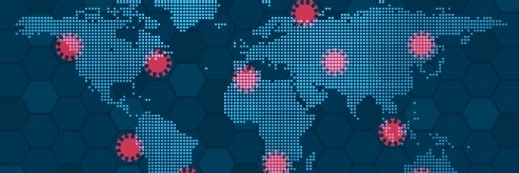
BAIVECTOR - stock.adobe.com
Deep Learning Model Identifies Drug to Combat Antibiotic Resistance
Researchers used deep learning to discover a new antibiotic compound that can kill strains of antibiotic-resistant bacteria.
A deep learning algorithm has identified a new drug that kills many of the world’s most challenging disease-causing bacteria, including some strains of antibiotic-resistant bacteria.
Researchers at MIT designed the deep learning model to pick out potential antibiotics that kill bacteria using different mechanisms than those of existing drugs. The algorithm can screen more than a hundred million chemical compounds in a matter of days.
“We wanted to develop a platform that would allow us to harness the power of artificial intelligence to usher in a new age of antibiotic drug discovery,” said James Collins, the Termeer Professor of Medical Engineering and Science in MIT’s Institute for Medical Engineering and Science (IMES) and Department of Biological Engineering.
“Our approach revealed this amazing molecule which is arguably one of the more powerful antibiotics that has been discovered.”
Few new antibiotics have been developed over the last few decades, researchers noted, and most of these newly approved antibiotics are slightly different variants of existing drugs. With antibiotic resistance on the rise, new drugs are necessary to combat infection and death.
“We’re facing a growing crisis around antibiotic resistance, and this situation is being generated by both an increasing number of pathogens becoming resistant to existing antibiotics, and an anemic pipeline in the biotech and pharmaceutical industries for new antibiotics,” Collins said.
The CDC estimates that each year, at least 2.8 million people in the US get an antibiotic-resistant infection, and more than 35,000 people die. The MIT team said that current methods for screening new antibiotics are often expensive, time-intensive, and usually limited to a narrow spectrum of chemical diversity.
Earlier deep learning models used for “in silico” screening were not accurate enough to transform drug discovery, the group said. Previously, molecules were represented as vectors reflecting the presence or absence of certain chemical groups. The new neural networks can learn these representations automatically, mapping molecules into continuous vectors which are subsequently used to predict their properties.
“The machine learning model can explore, in silico, large chemical spaces that can be prohibitively expensive for traditional experimental approaches,” said Regina Barzilay, the Delta Electronics Professor of Electrical Engineering and Computer Science in MIT’s Computer Science and Artificial Intelligence Laboratory (CSAIL).
Researchers designed the model to look for chemical features that make molecules effective at killing E. coli. They trained the algorithm on about 2,500 molecules, including about 1,700 FDA-approved drugs and a set of 800 natural products with diverse structures. The team then tested the model on the Broad Institute’s Drug Repurposing Hub, a library of about 6,000 compounds.
The model picked out one molecule that was predicted to have strong antibacterial activity and a chemical structure that was different from any existing antibiotics. The molecule, called halicin by researchers, was tested against dozens of bacterial strains isolated from patients and grown in lab dishes. The team found that it was able to kill many bacteria that are resistant to treatment.
Preliminary studies suggest that halicin kills bacteria by disrupting their ability to maintain an electrochemical gradient across their cell membranes. This gradient is necessary to produce ATP, molecules that cells use to store energy. If the gradient breaks down, the cells die.
“When you’re dealing with a molecule that likely associates with membrane components, a cell can’t necessarily acquire a single mutation or a couple of mutations to change the chemistry of the outer membrane. Mutations like that tend to be far more complex to acquire evolutionarily,” said Jonathan Stokes, a postdoc at MIT and the Broad Institute of MIT and Harvard.
Researchers found that E. coli did not develop any resistance to halicin during a 30-day treatment period. The team plans to conduct further studies on halicin to develop it for use in humans. Additionally, the group will use the deep learning model to design new antibiotics and refine existing molecules.
“This groundbreaking work signifies a paradigm shift in antibiotic discovery and indeed in drug discovery more generally,” said Roy Kishony, a professor of biology and computer science at Technion (the Israel Institute of Technology), who was not involved in the study.
“Beyond in silica screens, this approach will allow using deep learning at all stages of antibiotic development, from discovery to improved efficacy and toxicity through drug modifications and medicinal chemistry.”




